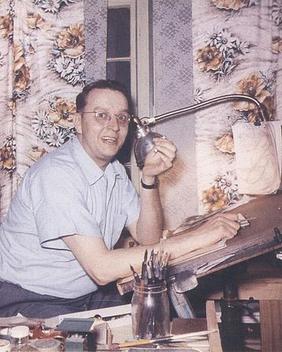
Jack Ralph Cole was an American cartoonist best known for birthing the comedic superhero Plastic Man, and his cartoons for Playboy magazine.
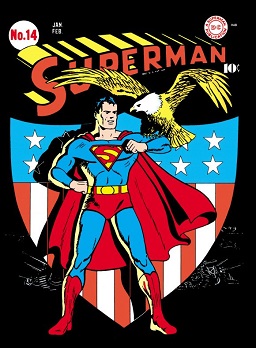
The Golden Age of Comic Books describes an era in the history of American comic books from 1938 to 1956. During this time, modern comic books were first published and rapidly increased in popularity. The superhero archetype was created and many well-known characters were introduced, including Superman, Batman, Robin, Captain Marvel, Captain America, and Wonder Woman.

An American comic book is a thin periodical originating in the United States, on average 32 pages, containing comics. While the form originated in 1933, American comic books first gained popularity after the 1938 publication of Action Comics, which included the debut of the superhero Superman. This was followed by a superhero boom that lasted until the end of World War II. After the war, while superheroes were marginalized, the comic book industry rapidly expanded and genres such as horror, crime, science fiction and romance became popular. The 1950s saw a gradual decline, due to a shift away from print media in the wake of television and the impact of the Comics Code Authority. The late 1950s and the 1960s saw a superhero revival and superheroes remained the dominant character archetype throughout the late 20th century into the 21st century.
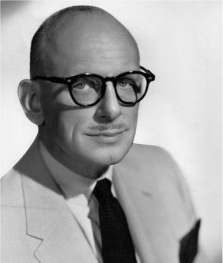
Lev Gleason Publications, founded by Leverett Stone Gleason (1898–1971), was the publisher of a number of popular comic books during the 1940s and early 1950s, including Daredevil Comics, Crime Does Not Pay, and Boy Comics.

Basil Wolverton was an American cartoonist and illustrator known for his intricately detailed grotesques of bizarre or misshapen people. Wolverton was described as "Producer of Preposterous Pictures of Peculiar People who Prowl this Perplexing Planet." His many publishers included Marvel Comics and Mad magazine.
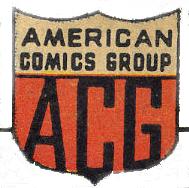
American Comics Group (ACG) was an American comic book publisher started in 1939 and existing under the ACG name from 1943 to 1967. It published the medium's first ongoing horror-comics title, Adventures into the Unknown. ACG's best-known character was the 1960s satirical-humor hero Herbie Popnecker, who starred for a time in Forbidden Worlds. Herbie would later get his own title and be turned into a "superhero" called the Fat Fury.

Charles Biro was an American comic book creator and cartoonist. He created the comic book characters Airboy and Steel Sterling, and worked on Daredevil Comics and Crime Does Not Pay at Lev Gleason Publications.

Daredevil is a fictional superhero created by Jack Binder, who starred in comics from Lev Gleason Publications during the 1930s–1940s period historians and fans call the Golden Age of comic books before being retroactively established into the Image Universe by Image Comics in the 1990s as its first character. The character is unrelated to Marvel Comics' Daredevil, and recent renditions of the character have often renamed him to avoid confusion and potential lawsuits.
The Association of Comics Magazine Publishers (ACMP) was an American industry trade group formed in the late 1940s to regulate the content of comic books in the face of public criticism during that time. It was a precursor to the Comics Magazine Association of America, and the ACMP Publishers Code served as the template for a more detailed set of rules enforced by the CMAA's Comics Code Authority.

Fred Kida was a Japanese-American comic book and comic strip artist best known for the 1940s aviator hero Airboy and his antagonist and sometime ally Valkyrie during the period fans and historians call the Golden Age of Comic Books. He went on to draw for Marvel Comics' 1950s iteration, Atlas Comics, in a variety of genres and styles, and then again for Marvel superhero titles in the 1970s. He drew the company's The Amazing Spider-Man newspaper comic strip during the early to mid-1980s. Kida also assisted artist Dan Barry on the long-running strip Flash Gordon from 1958 to 1961 and then again from 1968 to 1971.

Blue Ribbon Comics is the name of two American comic book anthology series, the first published by the Archie Comics predecessor MLJ Magazines Inc., commonly known as MLJ Comics, from 1939 to 1942, during the Golden Age of Comic Books. The revival was the second comic published in the 1980s by Archie Comics under the Red Circle and Archie Adventure Series banners.

Crime comics is a genre of American comic books and format of crime fiction. The genre was originally popular in the late 1940s and early 1950s and is marked by a moralistic editorial tone and graphic depictions of violence and criminal activity. Crime comics began in 1942 with the publication of Crime Does Not Pay published by Lev Gleason Publications and edited by Charles Biro. As sales for superhero comic books declined in the years after World War II, other publishers began to emulate the popular format, content and subject matter of Crime Does Not Pay, leading to a deluge of crime-themed comics. Crime and horror comics, especially those published by EC Comics, came under official scrutiny in the late 1940s and early 1950s, leading to legislation in Canada and Great Britain, the creation in the United States of the Comics Magazine Association of America and the imposition of the Comics Code Authority in 1954. This code placed limits on the degree and kind of criminal activity that could be depicted in American comic books, effectively sounding the death knell for crime comics and their adult themes.

This Magazine is Haunted was a horror comic originally published by Fawcett between 1951 and 1953. Running 14 issues, it was the first of Fawcett's supernatural line; a string of titles which included Beware! Terror Tales, Worlds of Fear, Strange Suspense Stories, and Unknown Worlds.

The Face is a fictional character, a comic book superhero that appeared in 1940s comics during what historians and fans call the Golden Age of Comic Books. He was created by artist Mart Bailey and an unknown writer.

Silver Streak is a fictional superhero character created by Joe Simon that first appeared in Silver Streak Comics #3, from Lev Gleason Publications. He is believed to be the second-ever comic book superhero whose primary power is speed; All-American Publications' The Flash preceded him by two months. However, Silver Streak beat out National Allied Publications' Johnny Quick as the first superhero whose two powers were speed and flight. Silver Streak has a kid sidekick called "Mercury" ; he is also assisted by a falcon named "Whiz".
The Little Wise Guys is a group of fictional characters, created by Charles Biro, who first appeared in comic books from Lev Gleason Publications in the 1940s and Image Comics in the 2010s.
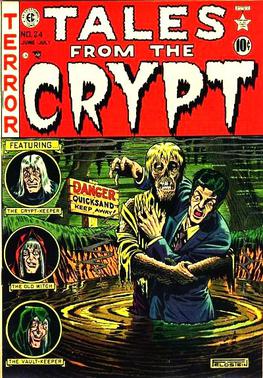
Horror comics are comic books, graphic novels, black-and-white comics magazines, and manga focusing on horror fiction. In the US market, horror comic books reached a peak in the late 1940s through the mid-1950s, when concern over content and the imposition of the self-censorship Comics Code Authority contributed to the demise of many titles and the toning down of others. Black-and-white horror-comics magazines, which did not fall under the Code, flourished from the mid-1960s through the early 1980s from a variety of publishers. Mainstream American color comic books experienced a horror resurgence in the 1970s, following a loosening of the Code. While the genre has had greater and lesser periods of popularity, it occupies a firm niche in comics as of the 2010s.

Star Publications, Inc. was a Golden Age American comic book publisher, operating during the years 1949–1954. Founded by artist/editor L. B. Cole and lawyer Gerhard Kramer, Star specialized in horror comics, crime, and romance comics — but also published talking animal stories. Star was originally based in New York City before relocating to Buffalo, New York.
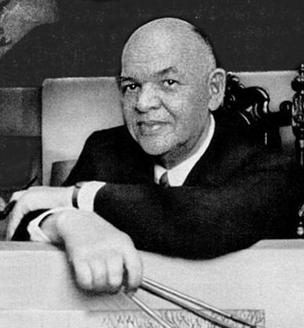
Elmer Cecil Stoner was an American comics artist and commercial illustrator. Stoner was one of the first African-American comic book artists, and is believed to have created the iconic Mr. Peanut mascot. He produced pencil art for the first issue of Detective Comics, published by National Comics Publications, and worked for a variety of other golden age companies such as Timely Comics, Street & Smith, EC Comics, Fawcett Comics, and Dell Comics. Near the end of his life, Stoner was also a spokesman for Gordon's Gin.
Robert L. Wood was an American comics illustrator. Wood worked for the Harry "A" Chesler Company and provided art for multiple companies, including MLJ Magazines and Lev Gleason Publications. In 1942, Wood and Charles Biro co-created Crime Does Not Pay, a series largely credited with beginning the "crime comics" trend in the industry. Wood's personal life was marred by drinking and gambling addictions, and he served a total of three years and eight months in prison between 1958 and 1963 for manslaughter. A few years after his release, Wood was struck by a car and killed.




















